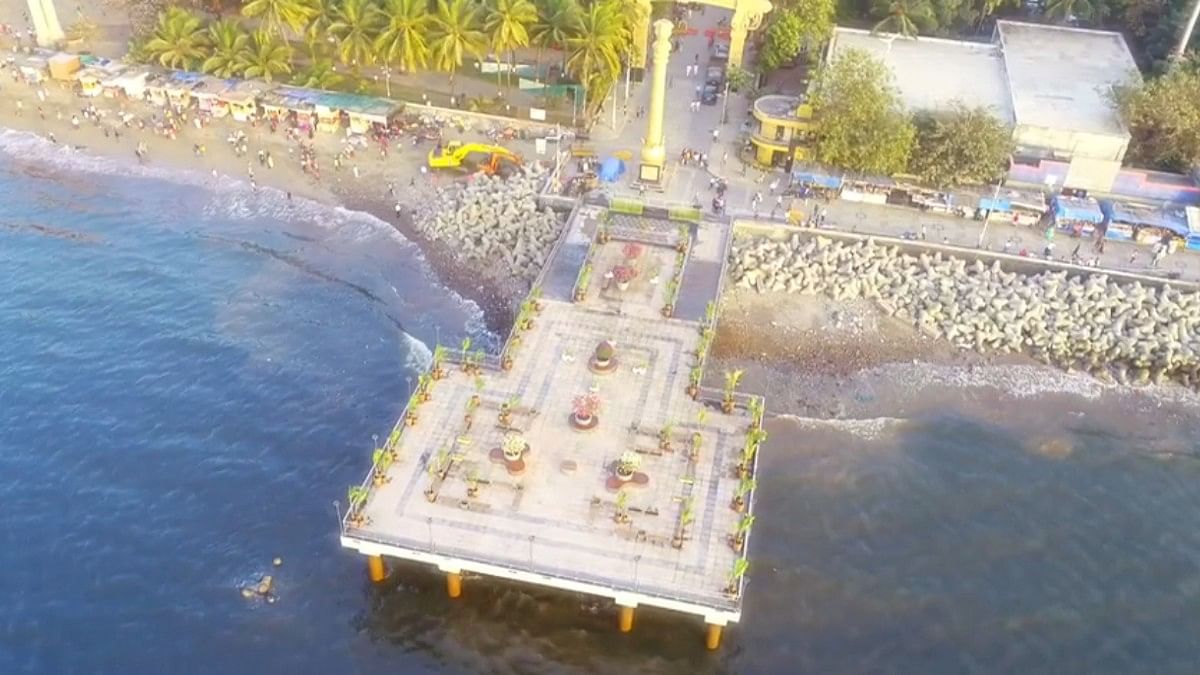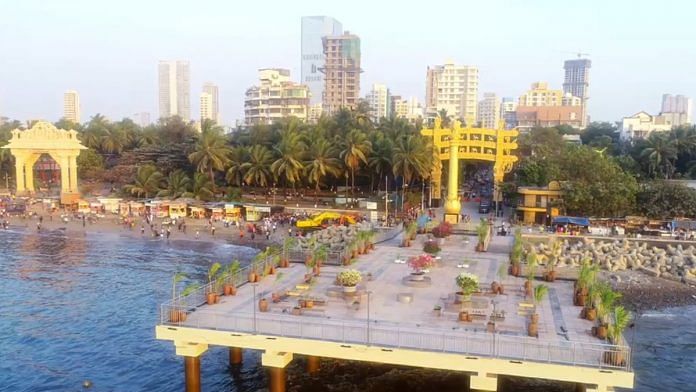Mumbai: Overlooking the majestic Bandra-Worli Sea Link, the Dadar viewing deck – part of BMC’s push for ‘tactical urbanism’ – is now open to the public and witnessing a daily footfall of 1,000-1,500, on average.
Sion resident Ganesh More, like hundreds of other Mumbaikars, visited the viewing deck to take in the crisp sea breeze, which came as a respite on a hot May afternoon.
“I am really enjoying sitting here. Despite the summer, there is a nice breeze here. It is not that Mumbai does not have places to go, but this is right in the centre and close to my house. The garden nearby closes in the afternoon but this place is open and the sitting arrangement is good here,” said More, who is a college student.
“It is a nice place, I am quite enjoying it here,” Krina Soni, who was visiting Mumbai from Vadodara, told ThePrint, adding that the spot was recommended by the management of the hotel where she was staying.
Named the ‘Mata Ramabai Ambedkar Smruti Viewing Deck’, the spot in Dadar is the latest addition to Mumbai’s list of open spaces.
Built on a foundation of 26 pillars, the Dadar viewing deck stands at a height of 20 feet from sea level, has a total area of 10,000 sq ft and can accommodate up to 250 people at any given time.

First conceptualised in 2020, the idea of a viewing deck in Dadar was eventually approved by a BMC standing committee in October 2020. Construction for the same began in March 2021 and cost the civic body Rs 6.5 crore.
Kiran Dighavkar, Brihanmumbai Municipal Corporation (BMC) assistant commissioner, planning, told ThePrint that the civic body is looking at more such projects as part of its push for ‘tactical urbanism’, aimed at converting unused open spaces to create urban open spaces for locals and tourists.
“Marine drive is such a hit attraction amongst tourists, so why can’t we have mini marine drives through tactical urbanism? So the idea clicked through that,” said Dighavkar, adding that the BMC is exploring the possibility of converting other storm outfalls into viewing decks.
“There are 46 such outfalls but we are studying the feasibility and a good view is also needed, mere presence of outfalls is not enough,” he added.
Also Read: Mumbai announces net-zero roadmap with 2050 in sight, 1st south Asian city to set such timeline
‘Community essence basis of tactical urbanism’
The Dadar viewing deck, which stands over a functional stormwater outfall drain, was built keeping in mind that it does not change the pattern of water currents.
“We went underwater until we found the rock bed, so that the foundation is strong. It is an environmentally friendly option where we are not disturbing the water currents. We got the necessary permissions from the environment department, also taking care of coastal zone regulations so that the coastal life is not affected,” Dighavkar told ThePrint.
Asked about whether the viewing deck will be shut during peak monsoon season, Dighavkar said: “There is a possibility that 2-3 hours on those 2-3 days of heavy monsoon when water is overflowing, there is a provision to close the gates so if required, it can be closed”.
Dighavkar added that the civic body is now thinking of converting the stormwater outfall near Hinduja hospital in Mahim into a similar viewing deck.
Community essence is the basis of tactical urbanism, explained Dighavkar, who heads the BMC’s planning department and is overseeing the development of open places in the city.
“One is urbanisation where you build roads, bridges, flyovers, metros or major infra projects. But what is eventually happening is after having so many projects, there are still places around them which can’t be really used. That’s where tactical urbanism comes into play,” he says.
The BMC is also in the process of developing gardens and walking trails under flyovers and rooftop plantations over bus stops as part of its push for tactical urbanism.
(Edited by Amrtansh Arora)
Also Read: Rs 17,000 cr revamp for Mumbai’s British-era BDD chawls: Residents hopeful, planners have doubts



